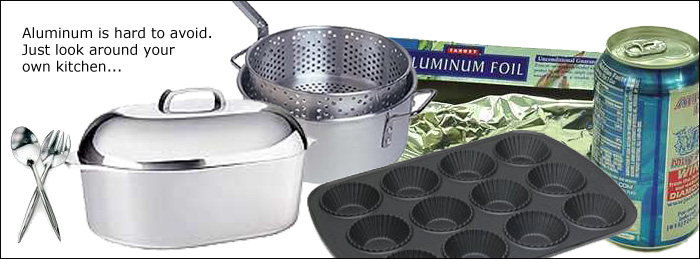
realtests -
http://www.realtests.com/admission/act-practice-test.htm
test-inside -
http://www.test-inside.com/test/toefl-practice.htm
examsheets -
http://www.examsheets.com/onlinetest/ged-practice-test.htm
braindumps -
http://www.braindumps.com/testprep/toefl-preparation.htm
selftestengine -
http://www.selftestengine.com/ccna-security-certification.html
 Gene Key To Alzheimer's-like Reversal Identified: Success In Restoring Memories In Mice Could Lead To Human Treatments
ScienceDaily (May 7, 2009) ó A team led by researchers at MIT's Picower Institute for Learning and Memory has now pinpointed the exact gene responsible for a 2007 breakthrough in which mice with symptoms of Alzheimer's disease regained long-term memories and the ability to learn.
In the latest development, reported in the May 7 issue of Nature, Li-Huei Tsai, Picower Professor of Neuroscience, and colleagues found that drugs that work on the gene HDAC2 reverse the effects of Alzheimer's and boost cognitive function in mice.
"This gene and its protein are promising targets for treating memory impairment," Tsai said. "HDAC2 regulates the expression of a plethora of genes implicated in plasticity ó the brain's ability to change in response to experience ó and memory formation.
"It brings about long-lasting changes in how other genes are expressed, which is probably necessary to increase numbers of synapses and restructure neural circuits, thereby enhancing memory," she said.
The researchers treated mice with Alzheimer's-like symptoms using histone deacetylase (HDAC) inhibitors. HDACs are a family of 11 enzymes that seem to act as master regulators of gene expression. Drugs that inhibit HDACs are in experimental stages and are not available by prescription for use for Alzheimer's.
"Harnessing the therapeutic potential of HDAC inhibitors requires knowledge of the specific HDAC family member or members linked to cognitive enhancement," Tsai said. "We have now identified HDAC2 as the most likely target of the HDAC inhibitors that facilitate synaptic plasticity and memory formation.
"This will help elucidate the mechanisms by which chromatin remodeling regulates memory," she said. It also will shed light on the role of epigenetic regulation, through which gene expression is indirectly influenced, in physiological and pathological conditions in the central nervous system.
"Furthermore, this finding will lead to the development of more selective HDAC inhibitors for memory enhancement," she said. "This is exciting because more potent and safe drugs can be developed to treat Alzheimer's and other cognition diseases by targeting this HDAC specifically," said Tsai, who is also a Howard Hughes Medical Institute investigator. Several HDAC inhibitors are currently in clinical trials as novel anticancer agents and may enter the pipeline for other diseases in the coming two to four years. Researchers have had promising results with HDAC inhibitors in mouse models of Huntington's disease.
Remodeling structures
Proteins called histones act as spools around which DNA winds, forming a structure in the cell nucleus known as chromatin. Histones are modified in various ways, including through a process called acetylation, which in turn modifies chromatin shape and structure. (Inhibiting deacetylation with HDAC inhibitors leads to increased acetylation.)
Certain HDAC inhibitors open up chromatin. This allows transcription and expression of genes in what had been a too tightly packaged chromatin structure in which certain genes do not get transcribed.
There has been exponential growth in HDAC research over the past decade. HDAC inhibitors are currently being tested in preclinical studies to treat Huntington's disease. Some HDAC inhibitors are on the market to treat certain forms of cancer. They may help chemotherapy drugs better reach their targets by opening up chromatin and exposing DNA. "To our knowledge, HDAC inhibitors have not been used to treat Alzheimer's disease or dementia," Tsai said. "But now that we know that inhibiting HDAC2 has the potential to boost synaptic plasticity, synapse formation and memory formation, in the next step, we will develop new HDAC2-selective inhibitors and test their function for human diseases associated with memory impairment to treat neurodegenerative diseases."
The researchers conducted learning and memory tasks using transgenic mice that were induced to lose a significant number of brain cells. Following Alzheimer's-like brain atrophy, the mice acted as though they did not remember tasks they had previously learned.
But after taking HDAC inhibitors, the mice regained their long-term memories and ability to learn new tasks. In addition, mice genetically engineered to produce no HDAC2 at all exhibited enhanced memory formation.
The fact that long-term memories can be recovered by elevated histone acetylation supports the idea that apparent memory "loss" is really a reflection of inaccessible memories, Tsai said. "These findings are in line with a phenomenon known as 'fluctuating memories,' in which demented patients experience temporary periods of apparent clarity," she said.
In addition to Tsai, co-authors are Picower postdoctoral associate Ji-Song Guan; and colleagues from Massachusetts General Hospital; Harvard Medical School; the Whitehead Institute for Biomedical Research; MIT's Department of Biology; the Dana Farber Cancer Institute; and the Netherlands Cancer Institute.
This work is supported by the National Institute for Neurological Disorders and Stroke, the Stanley Center for Psychiatric research at the Broad Institute of Harvard and MIT; the NARSAD, a mental health foundation, the National Cancer Institute, the Damon-Runyon Cancer Research Foundation; the Dutch Cancer Society; the National Institutes of Health; and the Robert A. and Renee E. Belfer Institute for Applied Cancer Science.
Elemental Enigma:
That my father developed Alzheimer's disease came as a great shock to me. No one in
our family had had Alzheimer's, so dementia wasn't even on my radar at the time. After
his death in 2004, I began a systematic search of the medical literature . . . picking up a
clue here, a hint there, retracing his steps in life the best I could to see where the pieces fit
to create the crazy quilt that was his Alzheimer's.
Most of the clues led me nowhere. In many ways, Dad led an exemplary life that,
according to the latest research, should have protected him from the disease. He was
highly-educated, active, sociable, interested in many areas of life. He ate a varied and
healthy diet.
In short, I couldn't understand what happened until I realized how often he had been
exposed to aluminum throughout his life.
It is my desire to share what I learned about the relationship between aluminum and
Alzheimer's with as many people as possible. By making wise life choices, I believe we
can head off the disastrous increase in the percentage of the elderly who develop and
eventually die from dementia.
Aluminum -- Abundant, Toxic
Aluminum is one of the most abundant minerals found on earth . . . and one of the most
toxic to humans. Aluminum damages nervous systems in both infants and adults. It is
implicated in anemia, osteomalacia, glucose intolerance, memory deficits, and
Alzheimer's, Lou Gehrig's (amyotrophic lateral sclerosis), and Parkinson's diseases.
Scientists do not yet understand whether aluminum is a primary cause of Alzheimer's or
is accumulated in the brain as a result of a malfunction caused by the disease. They do
know, however, that aluminum wreaks havoc on human nervous systems and should be
avoided.
What are the immediate symptoms of aluminum toxicity?
A 2005 research study from Poland examined behaviors in 67 males who had worked in
an aluminum production facility for as few as two and as many as 34 years. These
workers exhibited headaches, irritability, difficulty in concentrating, insomnia, and mood
swings. Tests revealed abnormalities in their brain functions.
These symptoms are bad enough. But what if the long-term symptoms include
Parkinson's or Alzheimer's disease? Would the prospect of those diseases motivate you
to do everything possible to avoid products and situations that will create aluminum
exposure?
The lists that follow contain a sampling of products and situations that you can avoid or
in some way alter.
Common products containing aluminum, how they enter the body, and steps to
remove or avoid them
Note: The lists that follow offer a sampling of products that may contain aluminum compounds.
Always read labels carefully regardless of whether products appear in these lists or not.
Entering Through Skin, Nose, and Eyes
A study published in 1991 found that aluminum was concentrated in the olfactory system
in the brains studied. Researchers surmised that the aluminum was airborne and inflicted
damage early in the disease process of Parkinsons-dementia complex.
The significance for aging? Aluminum in dust and vapor forms has a direct route from
the nose to the brain where it can make your life a nightmare.
Products
Fabric dyes use aluminum sulfate as a mordent (dye setting).
Showers create water vapor that is inhaled and water that is absorbed through the
skin. Most showers use water from municipal water treatment plants where the
water was treated with aluminum sulfate.
Shampoos may contain magnesium aluminum silicate or aluminum lauryl sulfate.
Douches may contain aluminum compounds.
Styptic pencils, often used to stop bleeding from small nicks and scratches, are
alum (aluminum potassium sulfate).
Cosmetics (cake type) contain magnesium aluminum silicate to prevent caking
and aid in smooth application.
Steps to Take
Reduce the length of showers to reduce the amount of water vapor inhaled.
Additionally, use shower filters that reduce the amount of aluminum passing
through your shower head.
Learn to make your own bath and spa products. Making them yourself can save
you money as well as save your health.
Cut back on the amounts and frequency of antiperspirants and cosmetics you use.
Quick showers, a healthy immune system, and an alkaline diet will reduce the
need for overuse of antiperspirants.
Entering by Mouth
Products
Drinking Water. Without testing, you simply do not know what contaminants
come along with your drinking water. But, if you're drinking municipal water,
it's highly likely that you are ingesting some form of aluminum. If you're
drinking well water, be sure to have it tested routinely.
Foods
Sodas and soft drinks may provide aluminum in two ways.
First, the water added may be a source of aluminum sulfate.
Second, aluminum cans are coated with a polymer to prevent the
acid content of the soda from leaching the aluminum into the
liquid. If the can is dented or cracked, the polymer may be broken,
and aluminum will be released into the liquid.
Table Salt, not sea salt which is generally not processed salt, may contain
aluminum as a drying agent to prevent caking.
Foods leavened with baking powder. Baking powder contains sodium
aluminum sulfate as a leavening agent.
Teas (black and green)
Chewing gum
Chocolate pudding
Pickles and relishes
Soy-based infant formulas
Ground coffee beans
Over-the-counter drugs
Buffered aspirin
Calcium supplements
Antidiarrheal drugs
Anti-ulcer medications
Pharmaceutical packs. Foil blister packs are the preferred method of
delivering pharmaceuticals to consumers. Although the foil is coated to
prevent aluminum contamination, cracks and tears can release aluminum
dust into the air and onto the pills.
And it's not just aluminum salts that create problems. Many products including soft
drinks, cake mixes, ice creams, and others use the flavor enhancer, maltol. Maltol
combines with aluminum in the digestive tract to form aluminum maltolate, a compound
that can cross the blood/brain barrier to transport aluminum into the brain. Moreover,
aluminum maltolate causes oxidative stress in the brain and death in neuronal cells.
All in all, it’s a good bet that many boxed and frozen foods are poor choices for good
brain health.
Steps to Take
Check your local water quality at the Environmental Protection Agency website
here: http://www.epa.gov/safewater/dwinfo/index.html
Get water tests, especially if using well water, so you'll know which, if any,
contaminants you're dealing with. Many state universities offer water testing
facilities. If they do not, they will know where you can get such tests.
Filter water, especially drinking water, with filters designed to remove aluminum.
You'll find two types of filters readily available: reverse osmosis and counter-top
filters. Learn about the benefits of each before making a choice.
Cut down on your intake of breads. Use yeast breads rather than breads leaved
with baking powder. BONUS: You'll lower your risk of diabetes, and you'll
have a better-looking waist line when you reduce your intake of breads.
Read labels carefully before purchasing products. Avoid those with "alum,"
"aluminum", "alumino", "aluminate", "maltol", or "baking powder" in the list of
ingredients.
By now, you may be wondering just what's left to eat.
The answer: Plenty, if you change you're eating patterns and begin to use whole rather
than prepared foods. For example, if you're a pizza lover, make your own using a yeast
dough with whole wheat, stone-ground flour, fresh veggies, and real rather than process
cheese. You'll not only be doing your body a favor, but you'll enjoy the difference in
taste when you use fresh, whole foods.
Aluminum Cofee Makers
Studies indicate that a small amount of aluminum leaches into food products when
cooked in aluminum cook or bake ware or aluminum foils. The amount, however,
increases when the food cooked is highly acidic, as for example, fruits such as berries and
tomatoes.
Steps to Take
Do not cook foods in aluminum. Period.
Replace aluminum cookware with ceramic-coated iron cookware (if you can
afford the price), stainless steel cookware, or heat-proof glassware. Remove
aluminum from your kitchen!
Entering Through the Lungs
Products
Steps to Take
Entering Through Other Means
Products
Steps to Take
Avoid these procedures if possible. If not, use potent antioxidants, especially melatonin,
to counter the effects of aluminum.
Conclusions
Although it’s not possible to completely remove aluminum from your environment and
your body, you can protect your brain from the ravages of this metal by changing the
choices you make – in food and environment. It may take a bit of thought at first, but
avoiding the significant dangers of aluminum make it very much worthwhile.
About the Author
"When my father was diagnosed with Alzheimer's disease, I couldn't imagine why it had
claimed him", says Phyllis Staff, Ph.D. "He was bright, active and enthusiastic with an
unbounded curiosity about the world and beyond. Yet when he ended his days, he was
unable to recognize his family, enjoy a meal, or take a walk. I needed to know why such
a good man would suffer such a horrible fate.
"At the same time, I wondered if I'd be the next one in my family to develop
Alzheimer's. I knew of no cure, so I concentrated on what could be done to avoid the
disease." Her book, 128 Ways to Prevent Alzheimer's and Other Dementias, grew out
of her research on avoiding dementia.
"As a result of my personal experiences, I've spent years studying medical research to
determine what steps can be taken to avoid the disaster of Alzheimer's. My years of
training as a research psychologist, and my years of living with my Dad's Alzheimer's
have given me a unique perspective for this work."
Dr. Staff is an experimental (research) psychologist who earned her Ph.D. from the
University of Texas at Arlington. She has spent more than 25 years identifying and
solving problems for organizations. She designed and implemented money- and people-
saving solutions for some of the world's largest educational institutions and Fortune 500
companies in the United States and Europe.
A native Texan, Dr. Staff lives in Waxahachie, Texas, where she cares for her elderly
mother. She is a writer and photographer whose articles and photographs have appeared
in scholarly journals and contemporary magazines. Her first book, How to Find Great
Senior Housing (2002), is now in its second edition.
You can contact Dr. Staff by email (Phyllis.staff@alzheimersfree.com) or phone (240-
230-1028). NEW DRUG can reverse the symptoms of Alzheimer's "in minutes" Comments:
Word up, Hi,
ORMUS is also a source of treatment with good success for AD.
In the studies that used it some 38 people returned home from a nursing home after treatment for 30 days with full memory recovery.
Incredible. DGreeno
|
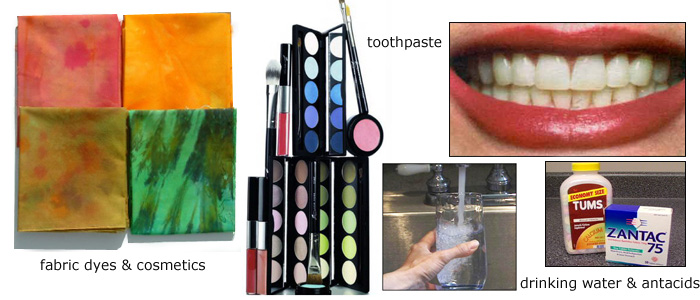
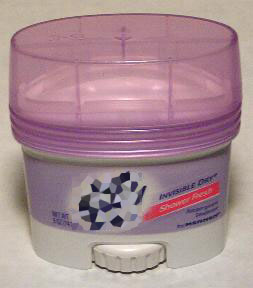 Antiperspirants rely on aluminum compounds such as aluminum chlorohydrate to
stop perspiration.
Antiperspirants rely on aluminum compounds such as aluminum chlorohydrate to
stop perspiration.  Tooth paste. Certain toothpastes, especially whitening varieties, often rely on
aluminum oxide as a polishing agent. Toothpastes are not required to list all
ingredients as though they were a food product; however, you can get an idea of
the ingredients by reading the warnings printed on the tubes. Frequently,
instructions warn users to seek treatment for poisoning if the tooth paste is
ingested by a child.
Tooth paste. Certain toothpastes, especially whitening varieties, often rely on
aluminum oxide as a polishing agent. Toothpastes are not required to list all
ingredients as though they were a food product; however, you can get an idea of
the ingredients by reading the warnings printed on the tubes. Frequently,
instructions warn users to seek treatment for poisoning if the tooth paste is
ingested by a child.  Soy foods. Soy beans contain anti-nutritive substances, so they must be
highly processed to remove the offending substances. As part of this
process, beans are washed in an acid bath in aluminum tanks. The acid
itself causes aluminum to be released into the beans and powder that is
used to make tofu and other soy foods.
Soy foods. Soy beans contain anti-nutritive substances, so they must be
highly processed to remove the offending substances. As part of this
process, beans are washed in an acid bath in aluminum tanks. The acid
itself causes aluminum to be released into the beans and powder that is
used to make tofu and other soy foods.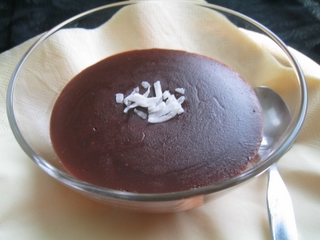 Process cheese contains aluminum compounds, but natural cheese (those
made by injecting bacteria into the milk slurry) are OK.
Process cheese contains aluminum compounds, but natural cheese (those
made by injecting bacteria into the milk slurry) are OK. 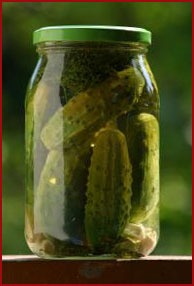 Antacids
Antacids 